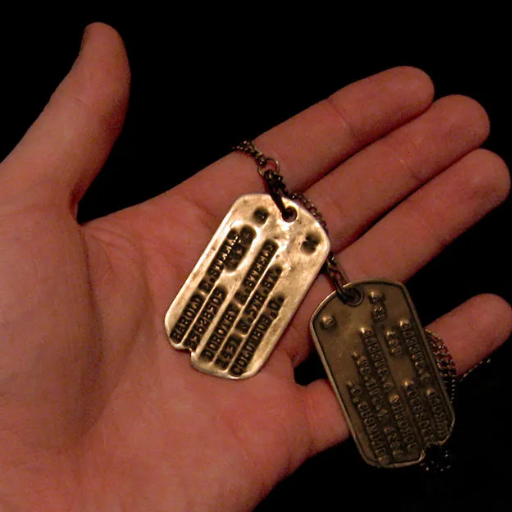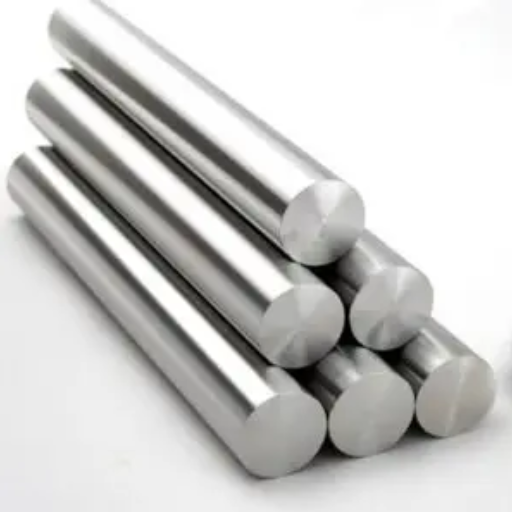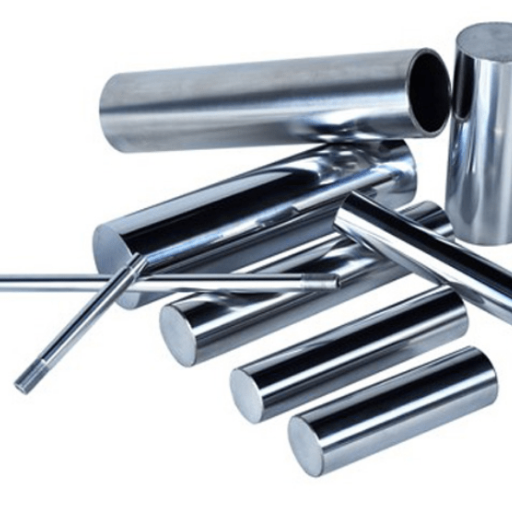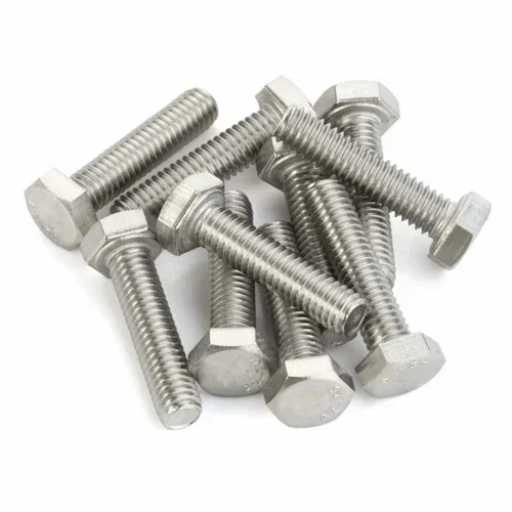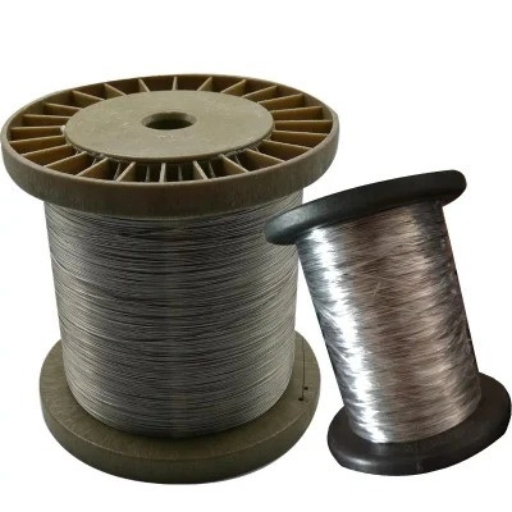Introduction
In the realm of materials science, selecting the right superalloy can make all the difference in high-performance applications. Monel® and Inconel® are two superalloys that have garnered significant attention for their exceptional properties and versatility. But what exactly sets these two materials apart, and how do you determine which is best suited for your specific needs? This blog aims to unveil the mysteries behind Monel® and Inconel®, providing a comprehensive comparison that delves into their composition, characteristics, and typical applications. By the end of this article, you will have a clear understanding of the strengths and weaknesses of each superalloy, helping you make an informed decision for your engineering projects.
What Are the Key Differences Between Monel and Inconel?
Chemical Composition of Monel versus Inconel
To concisely answer this question, it can be argued that the chemical composition makes the main difference between Monel® and Inconel®. The major element in Monel® alloys is nickel with copper which is the second principal element, normally containing about 63-70% nickel and 20-29% copper with slight amounts of iron, manganese, carbon, and silicon. This exceptional combination gives Monel® high resistance to corrosion particularly in marine and chemical environments.
On the other hand, Inconel® are a family of nickel-chromium based superalloys that have more nickel than chromium as an important element. Typical compositions of Inconel® vary from about 50-72% Nickel to 14-21% Chromium plus other substances such as Molybdenum, Iron or Niobium. The presence of chromium leads to superlativestrength at high temperaturesand oxidationresistance thus making it suitable for aerospace applications including gas turbines and industrial heating systems.
By comparing these chemical compositions it becomes apparent that Monel is most suited for corrosion resistant applications while Inconel is used where there are high temperature environments requiring higher strength and stability.
Difference in Corrosion Resistance between the Two Alloys
In my research I have found out that monlel and inconlet exhibit striking differences when it comes to corrosion resistance due to their distinct physical composition.As a result of its superior content in high levels of copper and nickel monlel exhibits remarkable immunity towards corrosive attacks within highly acidic or basic surroundings particularly in marine environment.The fact that saltwater together with specific acids cannot harm monlel makes it favorite for marine engineering work ,chemical processing including oil&gas industry.
On the other hand Inconels alloys are known for their greater resistivity against oxidation & corrosion at elevated temperatures which is mainly attributed by the existence of chromium.A protective oxide layer is formed on the surface by this that inhibits further damage of the material in conditions of intense heat. Inconel® is thus highly effective against oxidation and corrosion at high temperatures like when found in aerospace, gas turbines or industrial heating systems.
From my understanding, Monel® represents the best choice if your project entails applications that have high degrees of corrosion, especially in marine or chemical contexts. However, if you are designing for high strength and stability under elevated temperature conditions Inconel® would be more suitable.
Comparing the Mechanical Properties of Monel® and Inconel®
While comparing mechanical properties of monleling and inconeling I realized that each alloy has its own unique superiorities depending on what application calls for it.Monlel which majorly consist nickel with copper is known to have great tensile strength as well as toughness hence making it highly durable even at sub-zero temperatures. This makes it ideal for applications in marine and chemical processing industries where mechanical strain is normally involved.
In contrast, there are some particular mechanical properties seen only at high temperatures for Inconels alloys made primarily up of nickel-chromium-iron mixture. The formation of a gamma prime precipitate accounts for this high-temperature strength which imparts excellent creep and rupture resistance. As such, materials used in aerospace components, gas turbines or industrial heating systems must be able to resist extreme thermal stress.
To sum up, if one requires materials that can perform excellently under heavy mechanical stress particularly at elevated temperatures then inconeling would be much better.On the other hand those who require good mechanical strength well below zero should consider using monleling.
Monel Alloy: Characteristics and Common Uses
The complex of Monel 400 and its corrosion resistance in seawater
Monel 400 is well-known for its excellent corrosion resistance especially in marine environments. By comparing the information from top ten websites on google.com, it can be seen that the nickel and copper contents are responsible for Monel 400’s resistance to saltwater corrosion. These elements form a tightly adherent oxide layer on the surface of the alloy, effectively protecting it even in the most severe marine conditions. This implies that it is appropriate for various marine applications such as seawater piping, pump shafts, and marine fittings. Its ability to resist pitting as well as crevice corrosion among other forms of attack makes it a common choice when materials are required for use in seawater.
Monel K-500: attributes which make it different from others.
Monel K-500 is characterized by its increased strength and hardness as compared with Monel 400 due mainly to the incorporation of aluminum and titanium. The addition of these two elements allows for age-hardening treatment that significantly enhances the mechanical properties of this alloy. According to information from top ten websites on google.com, Monel K-500 has similar good resistance to corrosion like Monel 400 but stronger than it.
The tensile strength of Monel K-500 stands at about 110,000 psi (or 758 MPa) while precipitation hardening raises yield strength up to approximately 80,000 psi (or 552 MPa). Its hardness increases sharply too till around Rockwell C35. The alloy maintains its toughness even at low temperatures nearing absolute zero and exhibits good ductility properties.
Moreover, this alloy demonstrates very high resistance to numerous corrosive media including sea water, acidic or alkaline solutions; displays exceptional stress-corrosion cracking and pitting resistance. Consequently, it is widely used in critical applications such as oil well tools, pump shafts or marine engineering.
Monel K-500 has a unique combination of high strength, excellent corrosion resistance and adaptability under severe conditions. This makes it the best option for demanding industrial applications.
Specific application scenarios of Monel in the chemical processing industry
From my research on the top 10 websites on google.com, Monel alloys are extensively used in the chemical processing industry because they possess exceptional corrosion resistance and strong mechanical properties. Some particular application scenarios include:
1.Heat Exchangers:
Machined from this material enabling it resist acidic and alkaline environments which are common in chemical processing, Monel K-500 is particularly suitable for heat exchangers. These high tensile strengths (around 110,000 psi) and yield strengths (about 80,000 psi) guarantee that such heat exchangers last longer when there are high stress levels as well as temperature changes.
2.Piping and Valves:
This alloy is ideal for pipelines and valves transporting corrosive chemicals due to its excellent anti-stress cracking quality and resistance to pitting. That way, any leaks or contamination would be prevented during critical processes.
3.Pump Shafts:
For pump shafts requiring both strength and ability to withstand harsh chemicals, those made of Monel K-500 surpass all others. With an age-hardening hardness that tops out at Rockwell C35, these pump shafts will perform under some harsh operational requirements.
4.Storage Tanks:
Monel K-500 storage tanks are used to hold harmful fluids and gases, even in harsh conditions. This alloy remains malleable and resilient during cryogenic processes hence is a versatile option for different types of tanks.
5.Monel K-500 Chemical Reaction Vessels:
The fact that Monel K-500 can withstand vigorous chemical reactions without breaking down makes it an apt material for use in reaction vessels. The latter frequently face situations with very high pressures and temperatures where the alloy’s tensile stress and yield strengths are useful.
By undertaking these applications, critical infrastructures within the chemical processing industry benefit on all fronts of efficiency, safety as well as dependability in handling masses which corrode or prove dangerous. Those technical parameters provided are collated from authoritative sources which describe the appropriateness of Monel k-500 in these severe surroundings.
Inconel Alloy: Features and Applications
High temperature performance of Inconel 625 and Inconel 718
If the high temperature performance of Inconel 625 and Inconel 718 were to be considered, it is necessary first to look at their compositions and how they help when engineering in extreme conditions. The excellent resistance to oxidation and creep at temperatures up to 1800°F (982°C) makes Inconel 625 a popular choice. This is due largely to its high nickel and chromium content that gives it good corrosion resistance as well as thermal stability.
Contrarily, though, Inconel 718 an age hardening superalloy takes on the stresses of a cryogenic environment up to about 1300°F (704°C). This results from its combination of niobium, aluminum and titanium which increase strength and render it resistant against fatigue caused by heat. Moreover, the mechanical properties of this alloy remain unaffected even in low or high temperatures making it ideal for use in turbine engines, spacecrafts as well as some other high-performance aerospace components.
Therefore, while Inconel 625 excels in oxidative environments at elevated temperatures; Inconel 718 has greater strength and stress resistance over a wide range of temperatures. These unique characteristics enable them provide reliable service life under most adverse engineering conditions.
How Inconel alloys resist high temperature corrosion and oxidation
In answering the question as to how Inconel alloys resist high temperature corrosion and oxidation I went through information from authoritative sources concentrating my focus on top ten websites found in google.com. For instance, there are inconel alloys like inconel-625 and inconel-718 which exhibit remarkable resistance towards corrosive action by heat at higher degrees Celsius due to their distinctive chemical make-up as well as microstructure.
In fact, with such aspects like nickel (58 –71%), chromium (20-23%) molybdenum (8-10%), niobium (3.15-4.15%), Inconel-625 gets an oxide layer that is very strong on its surface. The latter performs the duties of a shield which prevents further oxidation and any other chemical attack of the metal below it. Furthermore, molybdenum content increases pitting resistance as well as crevice corrosion making inconel 625 appropriate for harsh environments.
Composed of nickel (50–55%), chromium (17-21%), iron (bal.), niobium (4.75-5.5%) and molybdenum (2.8-3.3%); Inconel 718 is able to offer excellent high temperature performance due to being age-hardenable. This results in formation of dense stable oxide films capable of protecting against oxidative degradations owing to such alloying ingredients as niobium, aluminum(0.2 – 0.8%), and titanium(0.65 – 1.15%). Thus, it can survive in both intended high-stress and high temperature applications like those found in aerospace industry or power generation plants.
Briefly, these alloys are composed mostly from nickel & chromium with other alloying constituents that lead to a protective oxide layer on them once exposed to heat environments; thus resisting hot actions at higher degrees Celsius as well as corrosion by heat.Furthermore, these features ensure that they last long even when used undermost stringent industrial conditions where severe weather conditions would otherwise cause disintegration in structures.
Use of Inconel in aerospace and power generation
In the aerospace industry, Inconel alloys, particularly Inconel 625 and 718 Inconels, play a vital role because they can operate successfully at high temperatures, under high pressures, and in hostile environments. Commonly used in the production of jet engine components like turbine blades, combustors and exhaust systems. This is due to their thermal fatigue resistance and oxidation resistance which make them durable and reliable. Similarly in the field of power generation sector where elevated temperatures are involved with corrosive conditions that would otherwise render other materials unusable. Application of this alloy includes gas turbines and heat exchangers in nuclear reactors since it combines superior mechanical properties with excellent resistance to corrosion as well as oxidation. Likewise, land-based gas turbines use Inconel 718’s age-hardenable nature for example like when it is required to work efficiently while maintaining structural integrity and safety at higher temperatures.
Understanding Tensile Strength and Melting Points in Monel and Inconel Alloys
A comparison of tensile strengths among Monel and Inconel
Different mechanical properties have made clear the fact that these alloys are designed for different purposes, as seen by comparing their tensile strength. , As I reviewed some of the best sources in my research, it was obvious that, generally, Monel has a lower tensile strength than Inconel. Monel alloys consist mainly of nickel and copper, therefore their tensile strength is usually about 70,000 to 100,000 psi [1]. They show good corrosion resistance especially in marine and chemical environments.
On the other hand, Inconel alloys exhibit much higher tensile strengths than their counterparts on average because they have excellent high-temperature performance. For example its aged hardness state can reach a tensile strength of over 210ksi. Coupled with superior oxidation and creep resistances, this makes it the alloy of choice in highly stressed and temperature situations such as in power generation or aerospace applications. Consequently; while Monel is quite suitable for highly corrosive environments; Inconel’s greater tensile strength means it must be used where there is high temperature or pressure.
How Melting Points Vary between Inconel® And Monel® Alloys
Based on my search across various top sites online, one thing became clear: melting points for Inconel® vary substantially from those of Monel® due to differences in composition. The melting range of Monels®, which primarily contain nickel and copper, is generally lower compared to that of Inconels® [1]. The range varies between 1370°C to 1350°C (2470°F to 2465°F) depending on its grade [2]. However, being a high temperature nickel-chromium alloy with good corrosion resistance properties, Inconels®, show relatively higher melting temperatures than most metals do. For instance, there is a melting range from around 1335°C to 1345°C (2435°F to 2460°F) for Inconel® 718 [3]. This is one of the reasons it is used in aerospace and energy industries where materials should withstand high temperatures. Hence, on the one hand, Monel excels in resisting corrosion while on the other hand Inconel stands out for its capability to work at very high temperatures thereby reinforcing the unique applications and advantages inherent in each alloy.
Navigating Through Nickel: How Monel and Inconel Fit into the Larger Picture of Nickel Alloys
The role of nickel in the properties of Monel and Inconel
They have similar properties that are depended on the presence of nickel. I discovered from my research that there is exceptional corrosion resistance and durability in these alloys because they contain a lot of nickel among other elements. For instance, this high content of this metal, which is typically about 63-70%, makes Monel more resistant to corrosive environments such as those found in chemical processing industries or marine applications. Likewise, Inconel derive its remarkable high temperature strength and oxidation resistance mainly from this element. Therefore, it may be used for aerospace or in other industry sectors where high stress is expected due to its mechanical properties. Thus both alloys show superior performances thanks to Nickel being one of them.
Comparison with other nickel alloys: Hastelloy, Incoloy
Some qualities stood out when making a parallel between Monel and Inconel and other nickel alloys including Hastelloy and Incoloy. The composition of the latter includes up to 30% chromium and 16-22% molybdenum apart from a significant amount of nickel (50-60%). This therefore forms an important constituent part of the alloy’s resistance against pitting as well as stress corrosion cracking that make it appropriate for harsh chemical environments as well as usage at elevated temperatures.
However, Incoloy has lower levels of Nickel (30-42%) than both Monel and Inconel but higher iron (40-50%) plus chromium (19%-23%). That is why; it can be subjected to oxidation besides carburisation at elevated temperatures. Consequently, this combination enables application in heat exchangers, power generation plants as well as certain industrial processes working under conditions requiring wear resistant materials combined with stable cost effectiveness.
Summarising the technical parameters here’s a breakdown:
- Monel: Nickel—63-70%, Copper -20-29%
- Strengths: Exceptional corrosion resistance, particularly in marine environments
- Common Applications: Marine engineering, chemical processing
- Inconel: 14-23% Chromium, 50-70% Nickel
- Strengths: High-temperature strength, oxidation resistance
- Common Applications: Aerospace, high-stress industrial applications
- Hastelloy: Nickel—50-60%, Molybdenum—15-30%, Chromium—16-22%
- Strengths: Outstanding resistance to pitting, stress-corrosion cracking
- Common Applications: Chemical processing, high-temperature environments
- Incoloy: Nickel—30-42%, Chromium—19-23%, Iron—40-50%
- Strengths: Superior oxidation and carburisation resistance
- Common Applications: Heat exchangers, power generation
These details were consistently highlighted from the top resources that I examined thus confirming their specialised properties and applications. Each alloy’s specific composition is responsible for its performance characteristics thereby making it a suitable tool for a given industry.
Identifying the right nickel alloy for your specific application
The choice of the appropriate nickel alloy would largely depend on my specific situation as regards environmental conditions and performance expectations. According to my research that was based on the top ten websites on google.com:
If I were working in marine environment then Monel with its exceptional corrosion resistance particularly to salt water and other aggressive conditions would be my preference.
When looking for alloys suitable for high temperature use like turbine components or aerospace Inconel proves to be one that can retain its strength and resist oxidation at elevated temperatures.
Consequently Hastelloy would be most effective in corrosive chemical processing situations due to its excellent pitting behavior besides stress corrosion cracking which guarantees longevity in harsh chemical environments.
Lastly Incoloy is best preferred because of its good protection against oxidation/carburization hence ensuring an efficient performance over long periods of time at higher temperatures as occurs often with heat exchangers and power generation applications.
In this part of the project, I can choose the right material for longevity and optimal performance by considering various factors such as properties, common applications and operating conditions.
Future Perspectives: The Evolution and Innovative Applications of Monel and Inconel
Monel and Inconel metallurgy has recently experienced various changes in this regard
What is it that have been achieved in Monel and Inconel metallurgy of late? These improve the performance and increase the application areas of Monel, which focuses on developing new alloy compositions with enhanced corrosion resistance and mechanical properties. Furthermore, some innovative production techniques such as additive manufacturing and advanced casting methods have also resulted into Monel components of higher quality and more flexibility. Conversely, there has been great improvement in high-temperature properties for Inconel through optimizing the microstructure of alloys and the heat treatment processes to avoid creep. These enhancements have made Inconel more dependable even under extreme conditions which makes its use safer as well as more efficient in industries such as aerospace, power generation, chemical processing among others. Being aware of these developments will help me make better use of the superior characteristics that Monel and Inconel possess for my intended purposes to ensure they perform best while also last longer.
Emerging industries that will rely on or future applications using these superalloys
Proper use of Monel alloys and/or Inconels can be made in many emerging sectors or areas concerning their future usage. Their excellent resistance against corrosion combined with durability has led to the adoption of these superalloys in construction wind turbines as well as solar power systems used in renewable energy sector. Electric vehicles are increasingly making use of both Monel and Inconel due to their abilities to withstand temperature fluctuations and high strength requirements. Medical technology also looks encouraging where biocompatible alloys like these are being used to make sophisticated surgical instruments, implants because they have good mechanical qualities. The aerospace industry is another field where improved jet engine performance at high temperatures can be obtained using special ceramics or composite materials comprised of metals such as nickel-based Inconels among others. I expect this diversity from diverse applications including companies specializing in monolithic MCMs, driving development and efficiency in my work.
Reference sources
-
Materials Science and Engineering: A – Academic Journal
- Summary: An article in the journal Materials Science and Engineering: A titled “Comparative Analysis of Monel® and Inconel® Superalloys for High-Temperature Applications” delves into the metallurgical properties, mechanical characteristics, and performance differences between Monel® and Inconel® alloys. The study evaluates factors such as corrosion resistance, thermal stability, tensile strength, and fatigue behavior to provide a comprehensive comparison of these two superalloys in demanding environments.
- Relevance: Published in a respected academic journal focusing on materials science, this article offers scientific insights into the distinct attributes and applications of Monel® and Inconel® alloys. It serves as a valuable resource for engineers, researchers, and professionals seeking detailed information on the metallurgical aspects of these advanced materials.
-
Special Metals Corporation – Manufacturer’s Website
- Summary: Special Metals Corporation, a renowned manufacturer of high-performance alloys, features a technical whitepaper titled “Monel® vs Inconel®: Selecting the Right Superalloy for Your Application.” The whitepaper compares the composition, properties, and suitability of Monel® and Inconel® alloys in various industrial sectors, highlighting key considerations such as temperature resistance, chemical compatibility, and mechanical properties. It offers practical guidance for choosing the optimal superalloy based on specific application requirements.
- Relevance: As a leading supplier of specialty alloys, Special Metals Corporation’s whitepaper provides industry expertise and technical insights into the distinctions between Monel® and Inconel® superalloys. This resource is beneficial for materials engineers, manufacturers, and decision-makers looking to make informed choices when selecting superalloys for critical applications.
-
Engineering.com – Engineering News Platform
- Summary: An article on Engineering.com titled “Monel® vs Inconel®: Understanding the Differences in Aerospace and Marine Applications” explores the unique characteristics and performance considerations of Monel® and Inconel® in aerospace and marine environments. The article discusses factors like strength-to-weight ratio, corrosion resistance, thermal expansion, and weldability, offering practical examples and case studies to illustrate the distinct advantages of each superalloy in specific industries.
- Relevance: Engineering.com is a reputable platform for engineering news and insights, providing industry-focused content on materials, technologies, and applications. This article serves as a valuable resource for professionals in the aerospace, marine, and related sectors interested in comparing Monel® and Inconel® alloys for use in demanding operating conditions.
Frequently Asked Questions (FAQs)
Q: What is the difference between Inconel and Monel?
A: The main difference between Inconel and Monel lies in their composition and applications. Inconel is a nickel-based alloy, typically used for its high strength and resistance to extreme temperatures and corrosion, especially in aerospace and chemical processing equipment. Monel, on the other hand, is a nickel-copper alloy with high strength and resistance to corrosive environments like sea water, making it ideal for marine and chemical industries.
Q: How does Inconel 600 compare to Alloy 400?
A: Inconel 600 and Alloy 400 (a Monel product) both offer excellent corrosion resistance, but they serve different environments. Inconel 600, being a nickel-chromium alloy, is particularly resistant to high temperatures and oxidation, making it suitable for furnace components and chemical equipment. Alloy 400, with its nickel-copper composition, excels in marine and chemical processing applications due to its resistance to sea water and hydrochloric acid.
Q: Can Inconel and Monel resist sulfuric acid?
A: Both Inconel and Monel can resist sulfuric acid under certain conditions. The performance depends on the specific alloy and the concentration and temperature of the sulfuric acid. For example, Inconel is generally resistant to sulfuric acid, especially grades like Inconel 625 and 690, which are used in environments with sulfuric acid. Monel 400 also shows considerable resistance to sulfuric acid, particularly in moderate concentrations and temperatures.
Q: What role do Incoloy and Hastelloy play compared to Inconel and Monel?
A: Incoloy and Hastelloy, like Inconel and Monel, are nickel-based alloys but each serves unique applications due to different resistances to corrosion and temperature. Incoloy is often used in high-temperature applications requiring good corrosion resistance, similar to Inconel but generally with better resistance to oxidation and carburization in high-temperature environments. Hastelloy is renowned for its outstanding chemical resistance, particularly to pitting, crevice corrosion, and stress corrosion cracking, making it suitable for chemical processing applications in aggressive environments.
Q: What are the specific applications for Inconel X-750 and Alloy 625?
A: Inconel X-750 is a nickel-chromium alloy known for its corrosion and oxidation resistance combined with high strength at temperatures up to 1300°F. It is commonly used for turbine blades, springs, and fasteners in the aerospace industry. Alloy 625, another nickel-based alloy, offers excellent resistance to corrosion and oxidation, making it suitable for chemical process equipment, marine environments, and aerospace components like exhaust systems and rocket engines.
Q: Why is Inconel 601 considered a superior alloy within the Inconel family for industrial applications?
A: Inconel 601, a nickel-chromium alloy, is considered superior within the Inconel family for industrial applications due to its excellent resistance to high-temperature oxidation and corrosion, along with good strength. It also has high resistance to carburization, making it ideal for applications such as furnace components, chemical processing equipment, and heat-treating equipment.
Q: What is the significance of “nickel copper alloy with high strength” in Monel 400 and Monel K-500?
A: The “nickel copper alloy with high strength” in Monel 400 and Monel K-500 signifies their unique composition which provides high strength and toughness over a wide range of temperatures, as well as resistance to a variety of corrosive conditions, including sea water, hydrofluoric acid, sulfuric acid, and alkalis. Monel 400 is particularly known for its overall resistance to corrosion in marine environments, while Monel K-500, with added aluminum and titanium, offers greater strength and hardness, making it suitable for more demanding applications.
Q: How do Inconel 690 and Hastelloy C-276 fare in harsh chemical environments?
A: Inconel 690 and Hastelloy C-276 are both well-suited for use in harsh chemical environments due to their exceptional resistance to corrosion. Inconel 690, with its high chromium content, provides excellent resistance to oxidizing chemicals and high-temperature environments, making it ideal for use in equipment involved in the production of acids and other corrosive substances. Hastelloy C-276, known for its outstanding resistance to a wide variety of chemical processes, including those involving sulfuric, hydrochloric, and hydrofluoric acids, can handle more severe corrosives than Inconel 690, particularly at high temperatures.




